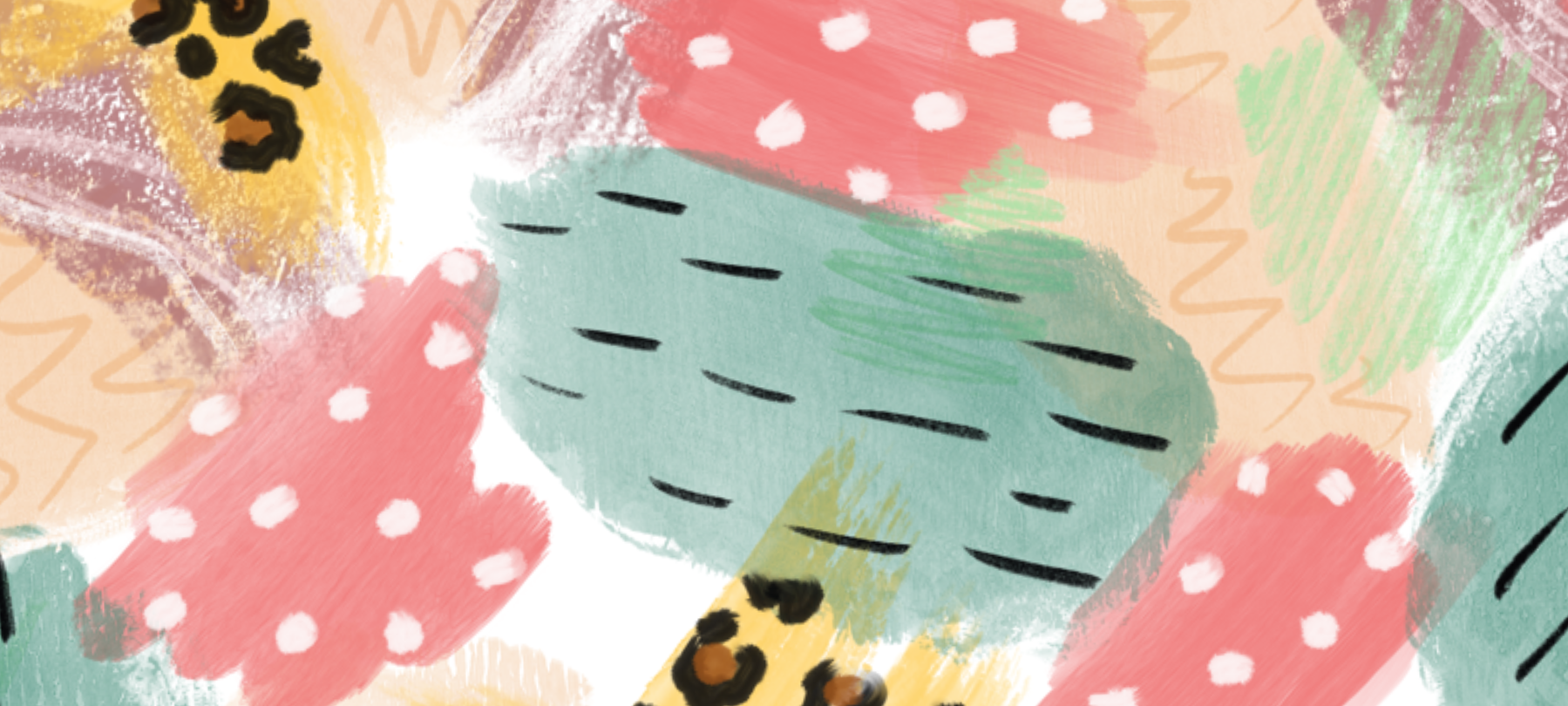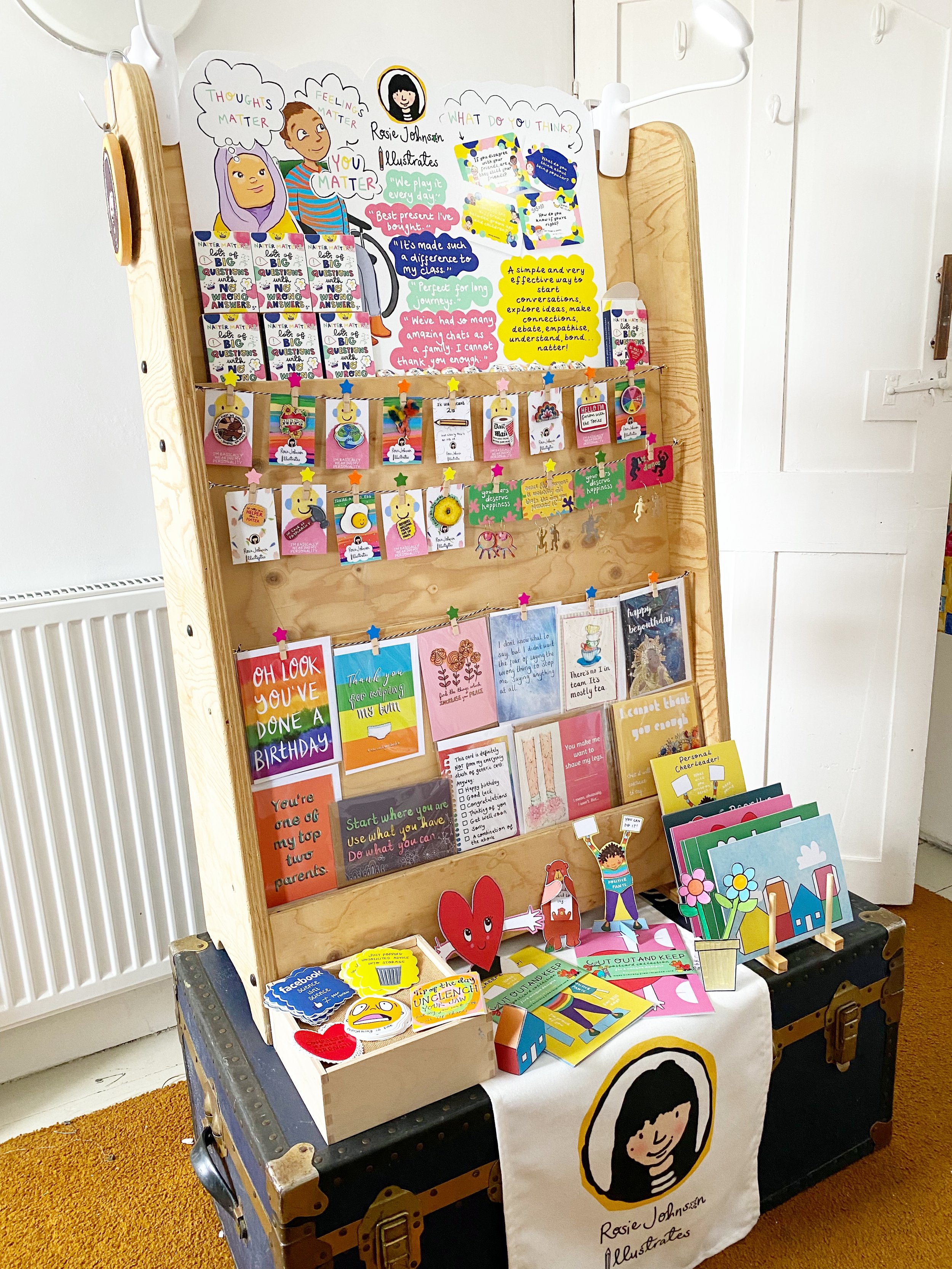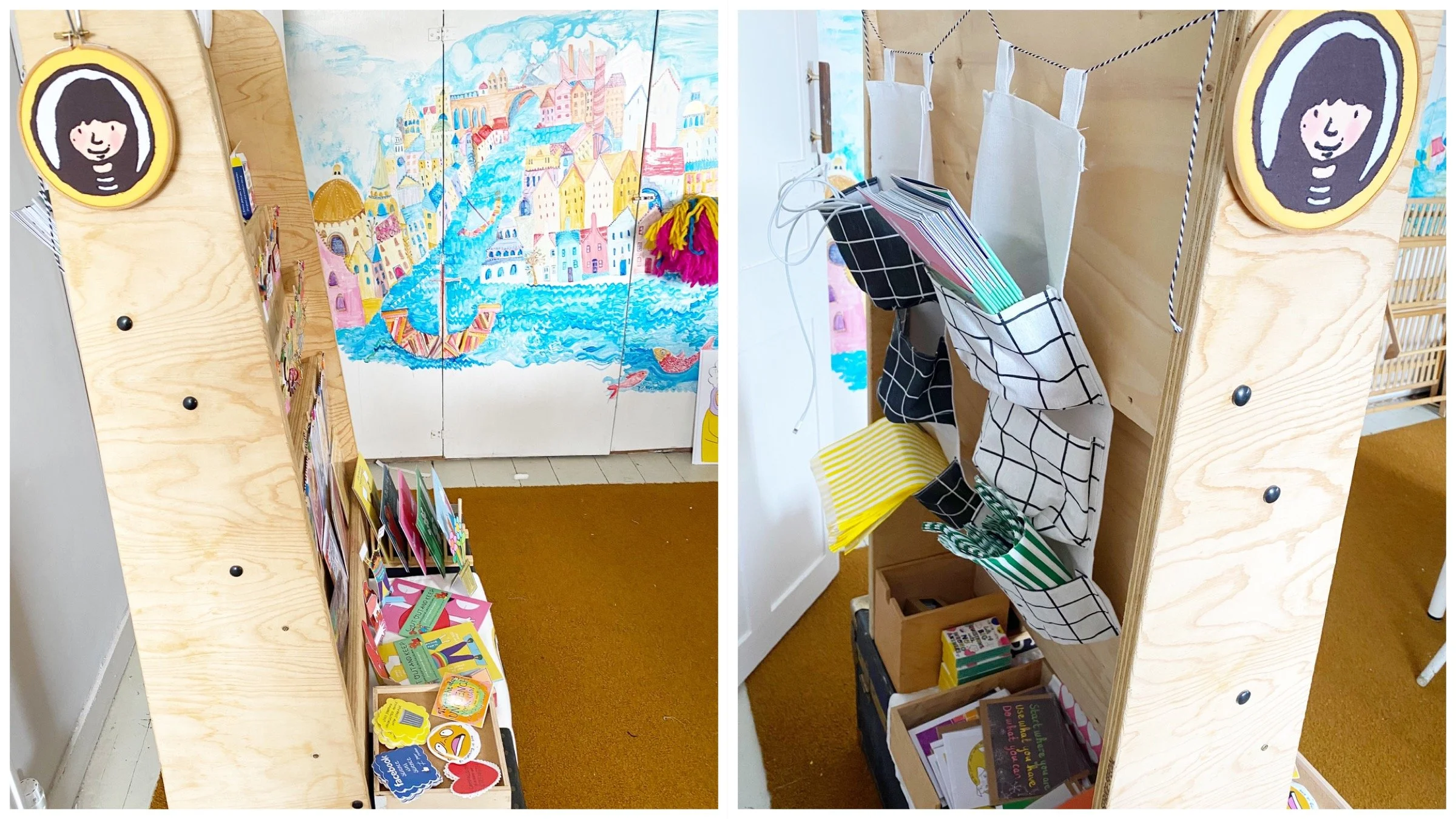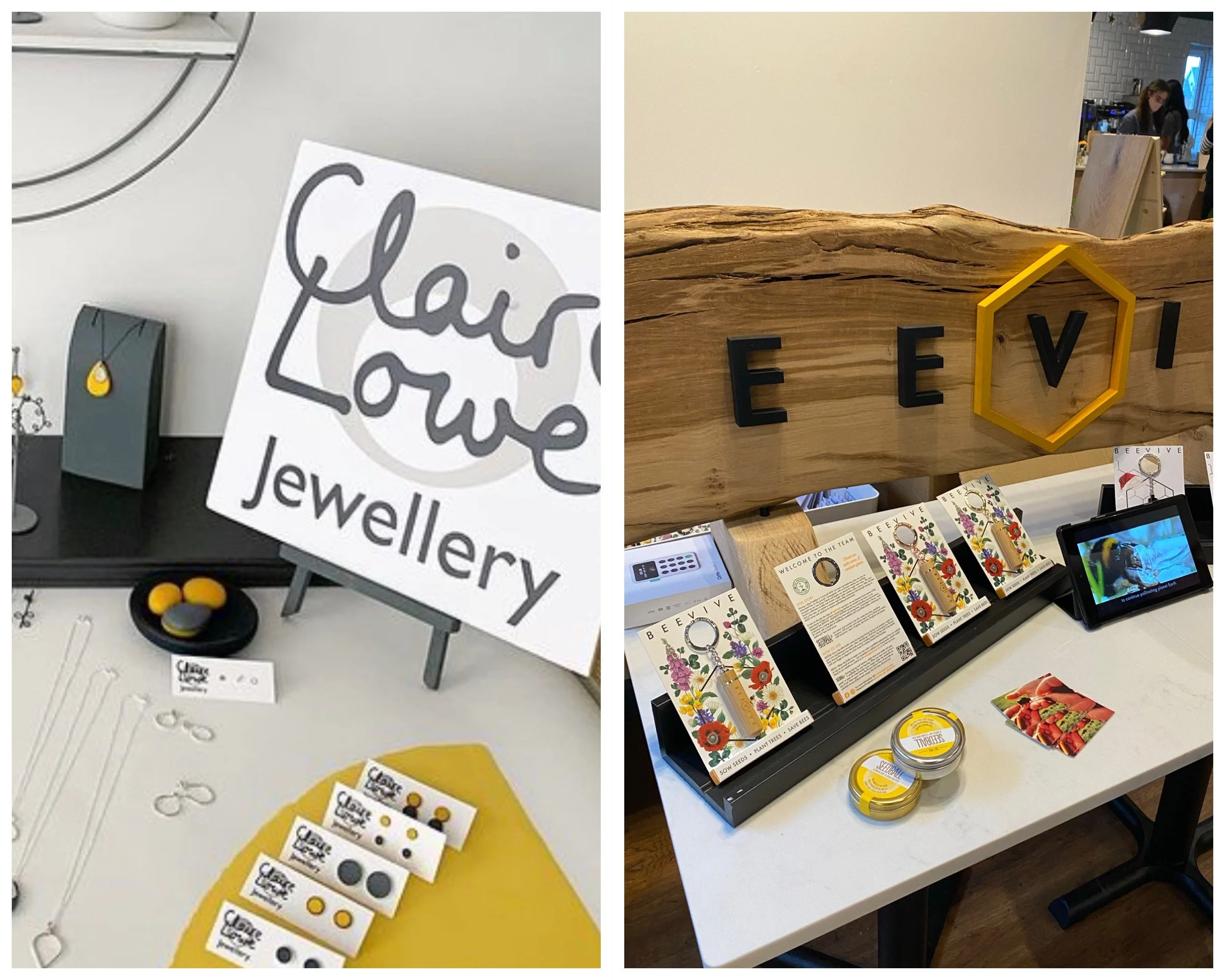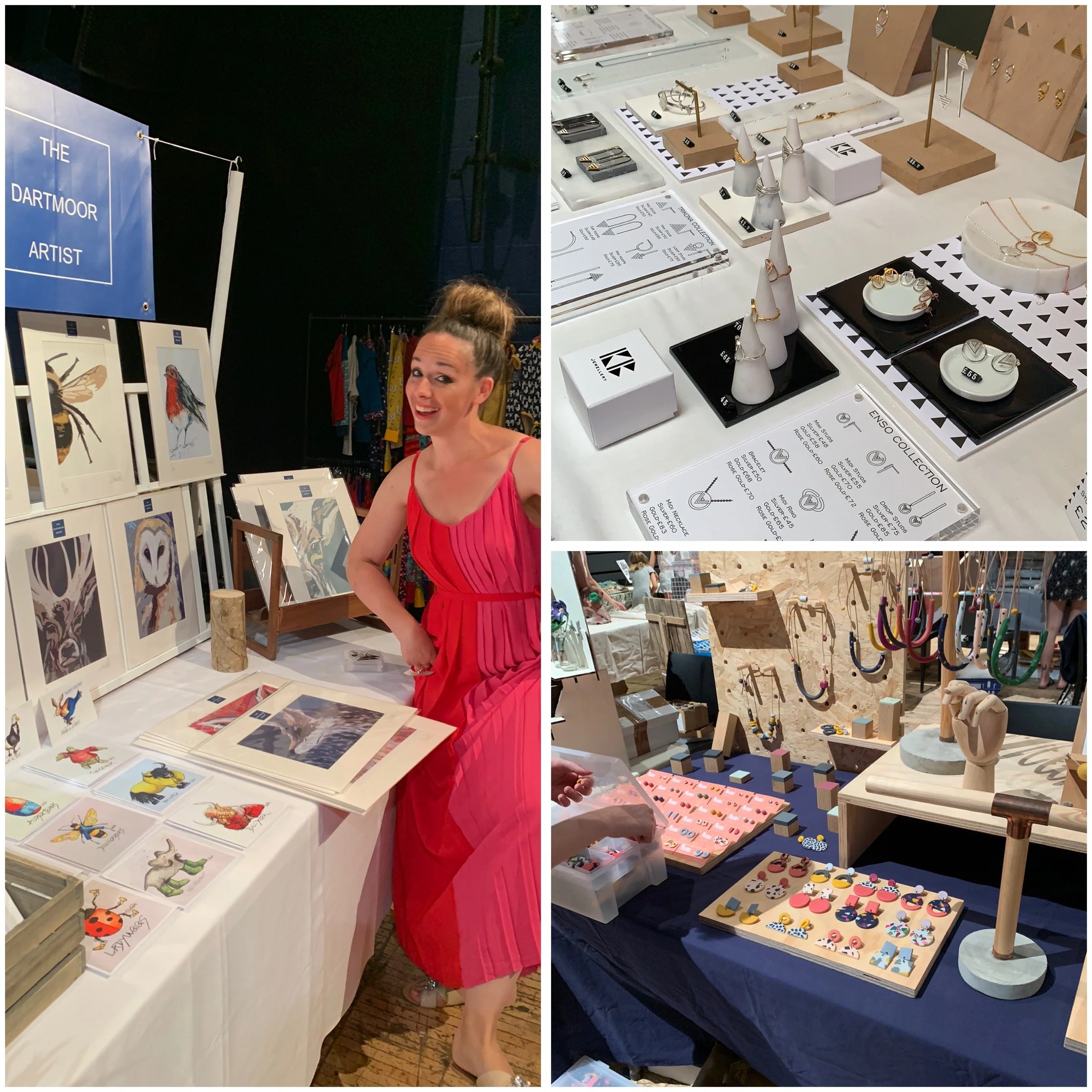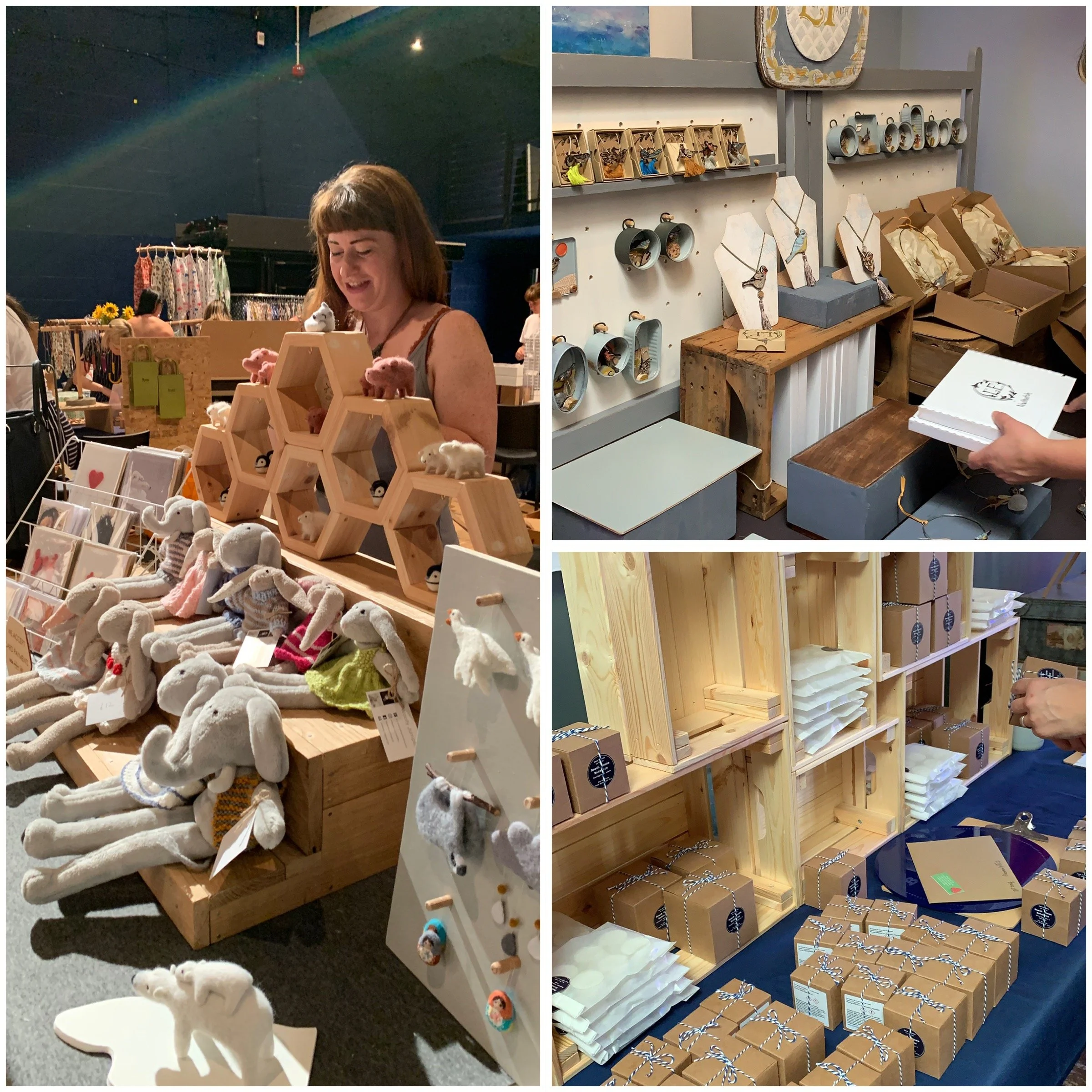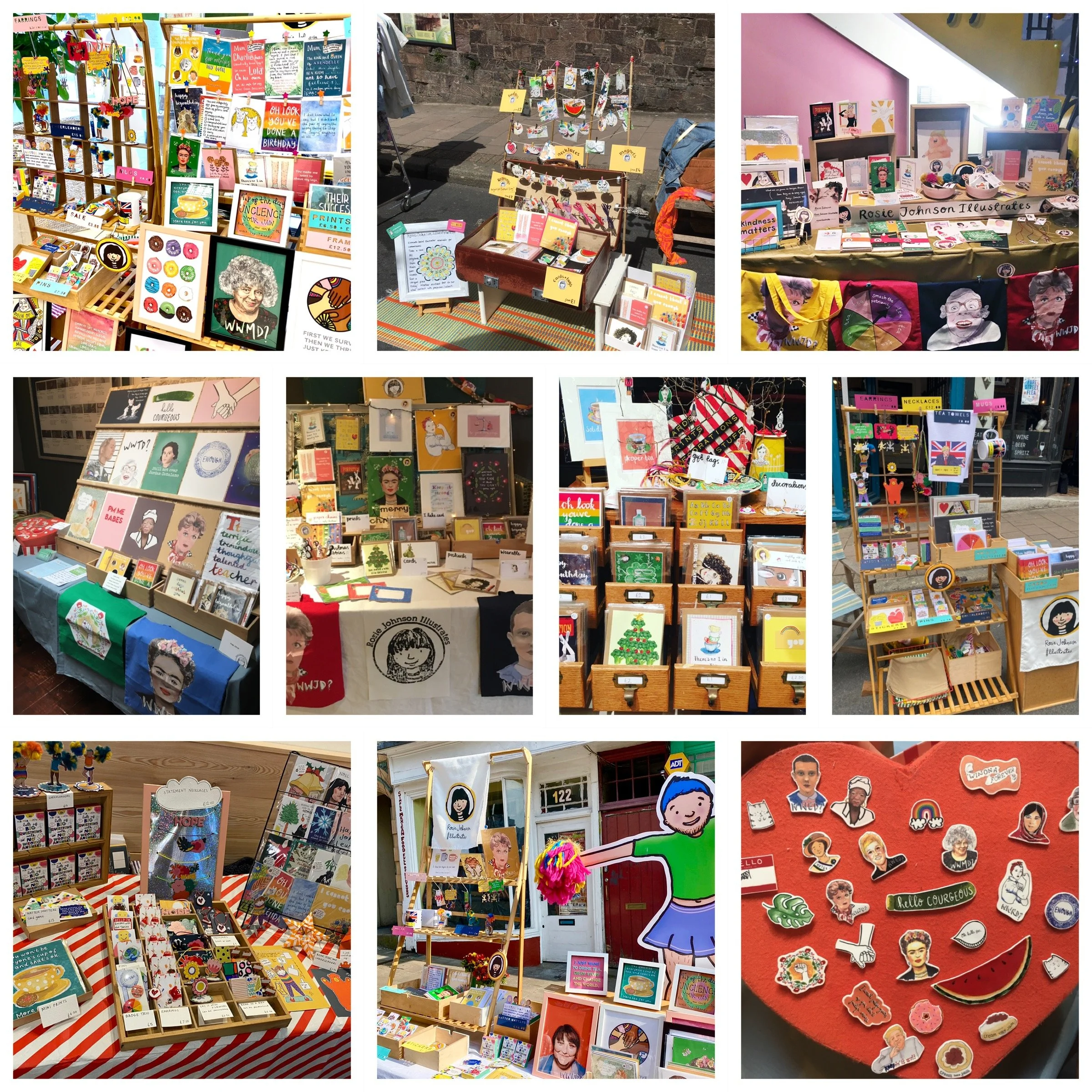A Trader’s Guide To Craft Markets and Art Fairs
Hi folks, as we emerge, blinking into the light from a long period of online-only markets, I thought it might be helpful to share what I do for in-person fairs.
Practising my stall set up for Native Makers in Plymouth.
For my tiny weeny pitch of just 1.2m I have had to get creative. Use of an old children’s bookcase gives me height and putting on top of a trunk adds more height and provides storage space for the stock for my little car! Behind the case I’ve strung up some cheap bathroom storage hangers for paper bags, more stock and my card machine. This will save my back the agony of continually bending down! As you can see, it’s all tucked away quite neatly so wherever I’m placed at the market it won’t matter if the behind the scenes end up being on display too.
I’ll keep it simple with one checklist of actions and another of items that I think are essential to help a craft fair/ art market run smoothly. They are not definitive lists, just the things I’ve found helpful over the years.
What to do BEFORE:
Research before you apply. If the market in question is focused on artisan items or traditional watercolours and you sell neon prints decrying modern politics, you may not be for them and, even if you get accepted, your target audience is unlikely to attend. Look online for photos of previous events and the kinds of stallholders who have attended previously. You could even reach out and ask them how they got on.
READ THE GUIDANCE FROM THE MARKET ORGANISERS - I know this seems so obvious but, particularly if you’ve done a few markets and become a little blasé about them, check the requirements such as pitch size, access to plug sockets, parking etc.
Costs. Look at how much the stall fees are but don’t forget to factor in travel, parking charges, fees from your card machine provider and food and drink for the day (more on that later.) How much would you need to make to take home a profit?
What to sell? Got accepted? Yay! Nice one! So now you’ll need to decide if you’re taking your full range or focussing on some key pieces. From your research before applying you’ll have seen whether this is a market for one-off high ticket items or more at the small gift end. In my experience, unless you’ve got tons of stall space, don’t take it all. It’s dispiriting to lug everything there and not sell anything from a particular range.
Stocktake. If you also sell online, make sure the stock you take with you to the market is factored into your inventory. I have been in the position of selling something in-person only to have the ker-ching of an online sale from my pocket inform me that someone else has bought it online. Disaster! Reduce your stock online before you sell in-person. You can then readjust your online inventory after the event and know that you’re not going to be refunding sales and potentially losing that customer forever.
Bestsellers and market extras. Obviously, always take your bestsellers because they are um… your bestsellers. But also see if you have some items you could sell as market exclusives. They could be mystery bundles of end of line items or market-only deals. These make the offer you have at your in-person event a bit special and distinct from what’s available online. Try and include some pocket money priced pieces. If people like your work they’ll be keen to buy something but might not be able to afford much. Include a business card and you may have secured yourself a future customer.
Practise your set up. I always always do a dry run set up in my studio of exactly how I’ll set up my stall. I don’t know if it’s because I’m a naturally anxious person or if everyone does this, but I find it very reassuring on the day if I know I’ve set everything up before and taken a photo of it so I can refer to the layout as I set it up for real.
Pricing. As a general rule, your market and online prices should be the same. That said, I find it easier to round off prices in-person- e.g. £3 rather than £2.95, particularly when dealing with cash. The fewer stray 5ps you have to deal with the better! Make your prices clear and easy to find. People don’t tend to like to ask how much something is.
Promote. This is such a biggie. Don’t leave all the promotion up to the organisers. Make sure in the weeks leading up to the market that you are shouting about it on your social media feeds, inviting friends to the event on Facebook, taking part in any opportunities like Instagram live sessions with the organisers. The more people you reach, the more footfall on the day. When I used to Co-host the Exeter Etsy Made Local markets, we asked customers how they found out about us and the vast majority said Facebook. Share share and share again.
Brand identity. Puke. I know, gross, what? I’m an artist daaaarling, I can’t be doing with this horrid corporate stuff. Well, yeah but you’re also a business owner and people need to know who you are and what you do instantly. It can be a handmade sign with your business name on or full on logos and colour palettes- it doesn’t matter as long as it reflects your offering.
Card machine. I use an IZettle (or is it Zettle now? I can’t remember) but there are plenty of great ones to choose from. They usually come with an app which allows you to load up your inventory. DEFINITELY take advantage of this feature. It helps you with quick transactions and also keeps track of what you’ve sold so you can reflect on what to take next time and what needs restocking. I also upload a snap of the product onto the app for the quickest sale experience. Saves time searching through and stops me accidentally selecting the wrong product.
Tips on stall layout. Now, I am not in any way setting myself up as an expert here. I change how I do it every time and still haven’t found a layout that I’m 100% happy with. I look longingly at the listing for plywood handmade peg boards and folding market canopies, but until I reach a point where I can invest thousands into my stall set up, I will stick with folding tables and stuff I can buy from the dump shop! Having said that, here are some things I have found to be true-
HEIGHT. get some height into your stall, be that with upturned boxes or crates or using letter racks to display prints.
TABLE COVERING. It’s tempting to find a pretty or bold tablecloth to cover your folding table but be wary of that anything which draws the eye away from what you’re selling. Plain, light colour cloths are usually best. Avoid draping fabric that might get caught up in wheelchair or pram wheels. Use heavy duty pegs to neatly clip them in.
LIGHT. Depending on the venue for your market you may find you need some additional lighting. Clip on rechargeable led lights are ideal and even a string of battery powered fairy lights can bring much needed illumination to your stall.
GET CREATIVE. You don’t need to spend loads to create an eye catching stall- use baskets, boxes, trays, whatever you have as receptacles for cards, stickers, jewellery.
HIDDEN TREASURES If possible, incorporating a little hidden space to house your card machine, phone and float is invaluable. I tuck mine away behind an upturned box or failing that, use my trusty bumbag. You don’t want the look of your stall spoiled by trailing charger wires. The same goes for extra stock. Hide it under your table or use attractive storage boxes which won’t detract from the overall appeal.
Claire Lowe jewellery and Beevive both have clear branding. They look professional and inviting.
Checklist for the day:
fully charged phone, portable battery charger, all the associated leads
card machine- do a dummy run to make sure it’s working
your table, cloth, any boxes or extras. I usually pack up the car the night before and take a photo of how I’ve packed it if it’s a tight squeeze so I can put everything back at the end of the day without squashing it all when I’m tired.
photo of the stall all set up to refer to. It’s so helpful.
price labels/ list
clip on lights
float. To be honest, I’ve forgotten to take one several times recently and it’s been fine as most people pay by card these days, but it’s a good idea to have some notes and coins in case.
scissors, string, blue tack, pens. Because even if you don’t need them, someone else will and then you’ll be a hero!
food and drink. This is particularly important if you’re on your own and can’t easily nip off for some grub. For me a thermos of tea is essential. Choose your snacks wisely. You may love the taste of boiled eggs but they might not be the smell you want wafting from your stall. Take a little fork so your fingers aren’t covered in goo. Heck, Chuck in some sanitiser and a hanky. Hygiene is your friend.
business cards. People love them apparently and they genuinely do want a way to find your details so take plenty. There may be wholesale or PR opportunities for the future. Got a mailing list? Take a clipboard and a sign up sheet.
wear something that makes you feel brilliant. I always have a better day and often more sales if I’m in an outfit that makes me feel comfortable, confident and ready for a fun day. Bum bags optional.
Whether you’re an artist or a jeweller, height adds instant appeal and visibility to your stall. Photos of the wonderful Dartmoor Artist, Katherine Barber Jewellery and NomiMakes from markets held in 2019
Final and most cheesy tip is this: enjoy your day. Chat with your stall neighbours, make friends, swap details, maybe buy a little something from their stall. Be friendly and smile at the punters. They’re having a lovely day out and don’t want to be greeted by a grumpy stallholder. You don’t have to be all singing all dancing, just be ready to talk positively about your products and your process.
And one for the to DON’T list:
Do not bad mouth the market. If you have a bad sales day and feel that more could have been done by the organisers give your feedback to THEM. Having organised several markets I can tell you that they are a massive massive undertaking and the organisers already feel responsible for how your day has gone. Slagging them off to fellow traders or worse, to the customers is a really bad look. Creative communities are essential and to be a supportive member of one you need to look at ways to be constructive and polite when you have criticisms. Conversely, if you’ve had a lovely day - be that good sales or just a great atmosphere and a fun time- SHOUT IT FROM THE ROOFTOPS. Thank the organisers and recommended the market to the community.
Thimblu, Lily Faith and Beachhouse Botanics all showing creative and imaginative ways of setting up their stalls. These photos are from the Etsy Made Local markets in 2019
You can see from these photos that I have tried many different options over the years. From my first ever market stall which was literally a suitcase with no branding or clue what I was doing to my latest stall (with the giant cheerleader) which, although far from perfect, is starting to reflect my style and definitely shows who I am. Always more to learn and hey, one day maybe I’ll be chic and minimalist?!
Good luck and try to get the most out of the experience you can. Go with the hope of making connections and enjoying your day. Xx Rosie

